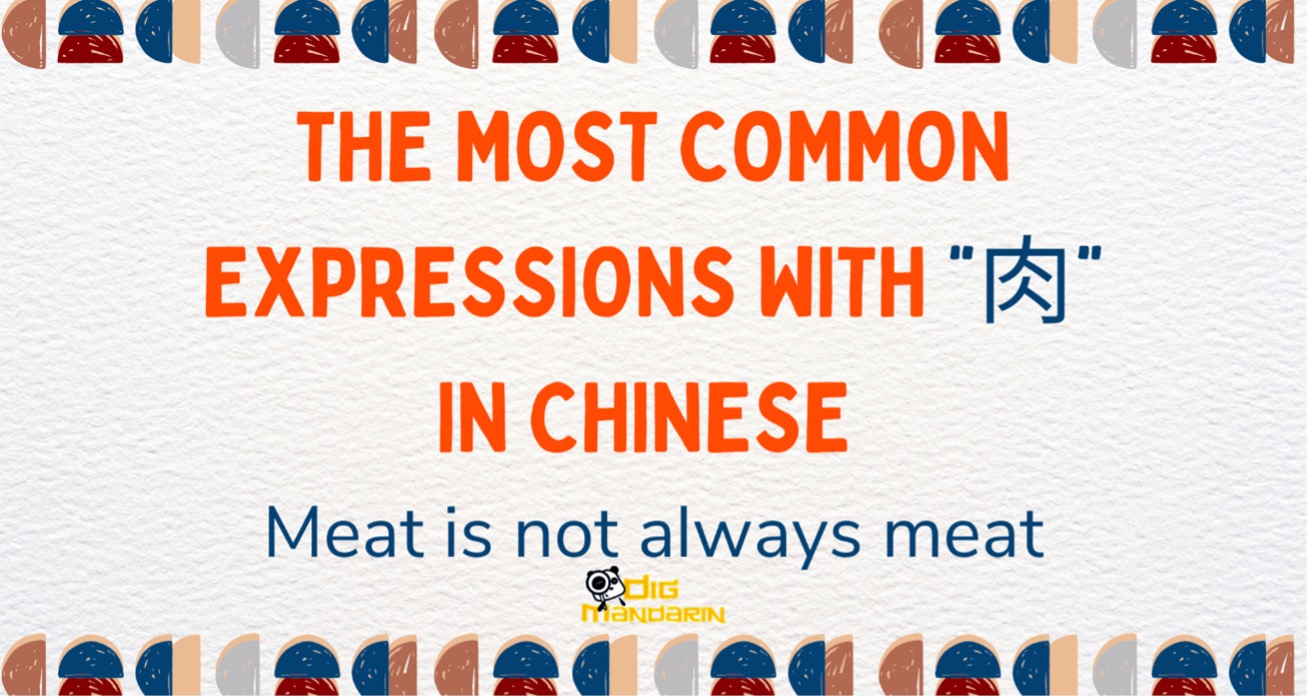Different Degrees in Chinese: Master How to Use 越来越 and 越…越…
After studying the language for a little while, do you find that your Chinese is getting better and better? Do you feel like the more you study, the more your fluency improves? That’s a sign that you’re moving in the right direction. But wait, how exactly can you tell your Chinese teacher or your friends just how much you’re improving? Well, there are two common expressions in Mandarin Chinese used to describe something that is increasing over time:
- 越来越… (yuè lái yuè…)
- 越…越… (yuè…yuè…)
Both of these expressions come very close to the English phrase “more and more,” but they have a few nuances that can be hard to grasp at first. In this article, we’ll take a look at the differences between these two phrases and when to use each one. If you’re feeling confident, we’ve also got a quick quiz you can use to test and reaffirm your new knowledge.
How to Use 越来越
越来越 (yuè lái yuè) expresses that something changes more and more as time passes. This phrase highlights that the change is happening gradually. You can start with this simple structure:
Subject + 越来越 + Adjective/ Mental verb
他的个子越来越高。(Tāde gèzi yuè lái yuè gāo)
He is getting taller and taller。
她长得越来越漂亮。(Tā zhăng de yuè lái yuè piào)
She becomes more and more beautiful.
我越来越喜欢画画儿。(Wŏ yuè lái yuè xĭhuan huàhuàr.)
I like painting more and more.
How to Use 越……越……
越…越… (yuè…yuè…) signifies that the degree of something changes as the situation develops. While 越来越 (yuè lái yuè) focuses on time, 越…越… (yuè…yuè…) specifically indicates situational changes. We are going to focus on three commonly used sentence structures:
(1) Subject + 越 + Verb + 越 + Adjective / Mental Verb
In this structure, the first 越 (yuè) is followed by a verb, and the second 越 (yuè) is followed by an adjective or a mental verb. It highlights how the degree of the adjective or mental verb changes with the evolution of the first action.
For example:
汉语越学越难。(Hànyǔ yuè xué yuè nán)
Learning Chinese becomes harder as you go.
这个问题越想越复杂。(Zhège wèntí yuè xiăng yuè fù zá.)
The more you think about the problem, the more complex it seems.
(2) Subject + 越 + Adjective 1 + 越 + Adjective 2
This structure includes two different adjectives, one after each 越 (yuè). This signifies that the extent of the first adjective increases the degree of the second adjective. The change in one quality brings about a corresponding change in another, creating a nuanced progression.
For example:
朋友越多越好。(Péngyou yuè duō yuè hăo.)
The more friends, the better.
苹果越红越甜。(Píngguŏ yuè hóng yuè tián. )
As the apple gets redder, it becomes sweeter.
(3) Subject 1 + 越 + Adjective 1/Verb 1, Subject 2+ 越 + Adjective2/Mental verb 2
This is where things get a little more complex. This final structure includes two different subjects, each with their own associated adjective or verb. This format highlights the relationship between the two subjects; think about how one subject’s change impacts the other.
For example:
他越解释,我们越糊涂。(Tā yuè jiĕshì, wŏmen yuè hútú)
The more he explained, the more confused we felt.
咖啡越苦,我越喜欢喝。(Kāfēi yuè kǔ, wŏ yuè xĭhuan hē.)
The more bitter the coffee, the more I like to drink it.
天气越冷,梅花开得越好看。(Tiānqì yuè lĕng, méihua kāi de yuè hăokàn.)
The colder the weather is, the better the plum flowers blossom.
Common Errors With 越来越 and 越…越…
Take a look at the following sentences:
1). *北京的人越来越很多。(Bĕijīng de rén yuè lái yuè hĕnduō.)
There are more and more many people in Beijing.
2). *他越来越学习中文。(Ta yuè lái yuè xuéxí zhōngwén)
He learns Chinese more and more.
3). *老师越说,越我们紧张。(Lăoshī yuè shuō, yuè wŏmen jĭnzhāng)
The more the teacher talked, the more nervous we felt.
These are all examples of common mistakes made with 越来越… (yuè lái yuè…) and 越…越… (yuè…yuè…) .
Let’s correct them:
1) Both 越来越 (yuè lái yuè…) and 越…越… (yuè…yuè…) already convey the idea of increasing to a greater extent. Therefore, they don’t need to be modified by other degree adverbs like 很 (hĕn, very), 非常 (fēicháng, extremely), or 太 (tài, too).
× 北京的人越来越很多。(Bĕijīng de rén yuè lái yuè hĕnduō.)
√ 北京的人越来越多。(Bĕijīng de rén yuè lái yuè duō.)
There are more and more people in Beijing.
2) You may remember that certain structures we mentioned earlier include “mental verbs”. In these cases, we can only use verbs that describe a mental action, such as 想(xiăng, miss), 希望(xīwàng, wish), 喜欢(xĭhuan, like), etc.
General verbs like 吃(chī, eat), 学习(xuéxí, learn), and 跑步(păobù, run) can’t be used in the same position. To give you a better idea of which verbs you can use here, take a look at the next section!
× 他越来越学习中文。(Tā yuè lái yuè xuéxí zhōngwén.)
√ 他越来越喜欢学习中文。(Tā yuè lái yuè xĭhuan xuéxí zhōngwén.)
He likes to learn Chinese more and more.
3) Going back to the 越…越… (yuè…yuè…) structure that uses two different subjects, it’s important to note that 越(yuè) should always come after each respective subject.
× 老师越说,越我们紧张。(Lăoshī yuè shuō, yuè wŏmen jĭnzhāng.)
√ 老师越说 ,我们越紧张。(Lăoshī yuè shuō, wŏmen yuè jĭnzhāng.)
The more the teacher talked, the more nervous we felt.
Common mental verbs in Chinese
Here is a list of some common mental verbs that you can use with 越来越 (yuè lái yuè…) and 越…越… (yuè…yuè…):
| 能够(nénggòu) can | 愿意(yuanyì) will | 敢(găn) dare | 想(xiăng) miss |
| 想要(xiăngyào) want | 喜欢(xǐhuan) like | 希望(xīwàng) wish | 爱(ài) love |
| 应该(yīnggāi) should | 可能(kěnéng) maybe | 羨慕(xiànmù) admire | 觉得(juéde) feel |
| 讨厌(tăoyàn) hate | 害怕(hàipà) be afraid | 认为(rènwéi) think | 相信(xiāngxin) believe |
| 同意(tóngyi) agree | 生气(shēngqi) get angry | 操心(cāoxīn) take pains | 听话(tinghuà) listen to someone |
Conclusion
While 越来越 (yuè lái yuè…) and 越…越… (yuè…yuè…) both have their own unique uses and challenges, mastery will come with practice. After reviewing the various sentence structures you can use, the mental verbs at your disposal, and the most common mistakes to watch out for, you’re now equipped to start using these expressions with confidence. Look for opportunities to try them out. Tell your friend that the more you eat, the more you like the food they made you. Celebrate with your teacher that the more you practice, the more confident you feel. Keep pushing yourself, and you’ll see amazing changes in time.
Exercises
Fill in the blank with the correct structure.
- 这座城市 ________热闹了。
(Zhè zuò chéng shì ________ rè nào le.)
The city is becoming more and more lively. - 你 ________努力, ________成功。
(Nǐ ________ nǔ lì, ________ chéng gōng.)
The harder you work, the more successful you become. - 他的中文 ________流利。
(Tā de zhōng wén ________ liú lì.)
His Chinese is getting more and more fluent. - 我们的生活 ________便利。
(Wǒ men de shēng huó ________ biàn lì.)
Our life is becoming more and more convenient. - 这本书 ________有趣, ________难放下。
(Zhè běn shū ________ yǒu qù, ________ nán fàng xià.)
The more interesting this book gets, the harder it is to put down. - 她 ________忙, ________没时间休息。
(Tā ________ máng, ________ méi shí jiān xiū xī.)
The busier she gets, the less time she has to rest. - Which sentence is correct?
A. 他越来越吃得快。
B. 他做得越来越好。 - Which sentence is correct?
A. 她越吃越胖。
B. 她越吃,越来越胖。 - Which sentence is correct?
A. 我们越来越学,越来越进步。
B. 我们越学,越进步。 - Which sentence is correct.
A. 他越来越跑得快。
B.他跑得越来越快。
Key:
- 越来越
- 越……越……
- 越来越
- 越来越
- 越……越……
- 越……越……
- B
- A
- B
- B





Awesome. Super helpful. Your disection is super effective.
Hi, great post! Thought I’d just let you note a small problem your page is showing:
It seems some of the pinyin is cut off (always at the end) .
(Tāde gèzi yuè lái yuè gā) should be (Tāde gèzi yuè lái yuè gāo)
(Tā zhăng de yuè lái yuè pià) should be (Tā zhăng de yuè lái yuè piào)
Hànyǔ yuè xué yuè ná) should be Hànyǔ yuè xué yuè nán)
(Tā yuè jiĕshì, wŏmen yuè hú) should be (Tā yuè jiĕshì, wŏmen yuè hútú)
(Ta yuè lái yuè xuéxí zhōngwé) should be ((Ta yuè lái yuè xuéxí zhōngwén)
Hi Elizabeth, many thanks for your reminder. We just fixed all of them.